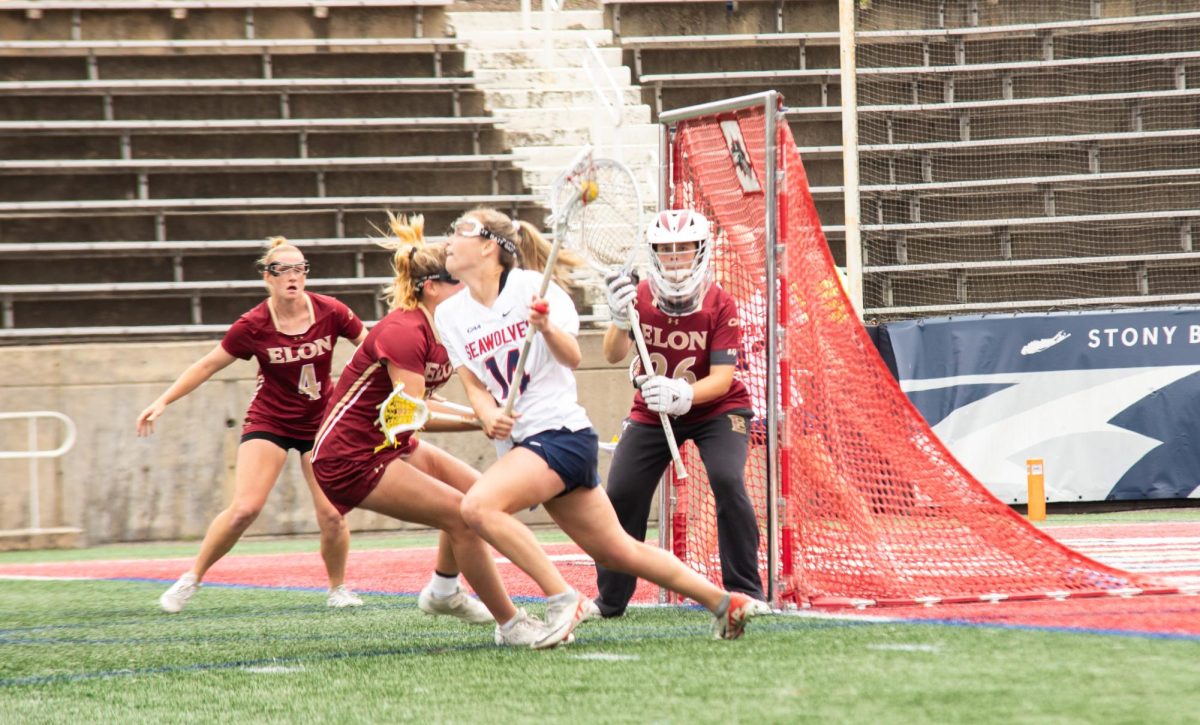
Since spring 2010, red striped United States Postal Service priority mail stickers have been ubiquitous on campus—they were plastered throughout the academic mall in buildings, on trash receptacles, light poles and even wasp catchers by a mysterious figure known only as “Walter.” However, the long search for the person behind the tags came to an end earlier this month after wake of the arrest of 20-year-old Jesse Jay Riker, a commuter student living in Stony Brook Village.
After an investigation beginning in spring of this year that included review of surveillance photos and interviews with campus personnel, Riker, originally from Miller Place, N.Y., was apprehended and arrested by University police near the Student Activity Center bus loop at approximately 9 a.m. on Dec. 1 after he was seen placing a tag.
“We had an incident in the Social and Behavioral Sciences building on Oct. 30,” said Deputy Police Chief Neil Farrell, referring to a security camera that managed to capture photos of Riker entering the building that Saturday afternoon, when marker tags were put up in the building. “From this, we were able to narrow it [the investigation] down from factors such as when and where the tags were placed.”
“He could have been any one of 26,000 students,” Farrell added.

Riker was then surrendered to Suffolk County police, who moved him to Suffolk County Criminal court where he will be arraigned on charges that include possession of graffiti instruments and criminal mischief in the 3rd degree—a class E felony in New York state that carries with it a jail sentence of at least three years. However, according to Chief of University Police Robert J. Lenahan, Riker will likely serve a reduced sentence of one year, but no more than 18 months if convicted on the most serious charge.
“In a lot of cases, depending on the severity of the crime, there are negotiations in which a sentence can be reduced if the accused pleads guilty,” Farrell said, who also noted that the chances of a perpetrator receiving the full three years for this offense were slim and also affected by the accused’s criminal background, if any.
Instead, it is more likely that he will face punishment from the university through the “offenses against property” clause of the University Student Conduct Code, which states that “any costs to repair, replace, restore, or clean University property to its original condition will be assessed to individuals and/or groups responsible for damaging, or defacing such property in addition to any sanctions which may be imposed.”
According to Farrell, probation is usually the outcome of cases such as this one because the university “usually wants to recuperate from time and money spent in clean-up.”

An example of this is the case of graffiti tagger MESKA, who was arrested on Mar. 30, 2010. MESKA, whose real name was withheld by campus police for privacy reasons, received probation and was forced to pay restitution to the university. However, according to Farrell, “significant amounts of graffiti” on the scale of Walter’s and MESKA’s exploits are uncommon on campus.
“Cases the size of MESKA’s and Walter’s are unusual,” Farrell said. “Most other graffiti incidents are usually isolated.”
In a press release issued on Monday, Dec. 6, Lenahan attributed the investigation’s success in part to “valuable information provided by members of the campus community,” which included students and faculty.

“As you could see from comments on the blog [http://whoiswalter.blogspot.com] and on tags themselves, students and faculty seemed to be against the tagging,” Farrell said. When asked whether the blog was an aid to the investigation, he replied that it was not, but conceded that “it wasn’t a deterrent, either.” Instead, it served as a glimpse into just how widespread the tagging had become.
“It doesn’t make for a nice campus when there are graffiti tags all over,” Farrell said. “We feel a sense of satisfaction in finding who’s behind it.”
Attempts were made to contact Riker, but he declined to comment.

















